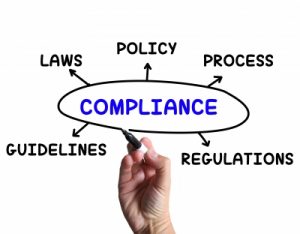 Under Title IX, the concept of “responsible employee” has a great deal of significance, as recently reaffirmed by OCR in its Questions and Answers on Title IX and Sexual Violence (Q&A), and previously reported in this blog. OCR deems an institution to have notice of student-on-student sexual harassment and/or misconduct if a “responsible employee” knew, or in the exercise of reasonable care should have known, that harassment/misconduct occurred. And, of course, it is that knowledge that triggers an institution’s obligation to take appropriate steps to investigate and, as appropriate, end and remedy that harassment/misconduct. Responsible employees also have the initial obligation to report incidents of sexual harassment/misconduct to the Title IX coordinator (or other appropriate designee). So who is a “responsible employee” in the eyes of OCR? While OCR’s Q&A may provide some clarification of this very significant issue, it continues to leave a number of unanswered questions for colleges and universities. At one place in its Q&A, OCR provides that a responsible employee is any employee:
Under Title IX, the concept of “responsible employee” has a great deal of significance, as recently reaffirmed by OCR in its Questions and Answers on Title IX and Sexual Violence (Q&A), and previously reported in this blog. OCR deems an institution to have notice of student-on-student sexual harassment and/or misconduct if a “responsible employee” knew, or in the exercise of reasonable care should have known, that harassment/misconduct occurred. And, of course, it is that knowledge that triggers an institution’s obligation to take appropriate steps to investigate and, as appropriate, end and remedy that harassment/misconduct. Responsible employees also have the initial obligation to report incidents of sexual harassment/misconduct to the Title IX coordinator (or other appropriate designee). So who is a “responsible employee” in the eyes of OCR? While OCR’s Q&A may provide some clarification of this very significant issue, it continues to leave a number of unanswered questions for colleges and universities. At one place in its Q&A, OCR provides that a responsible employee is any employee:
(a) who has the authority to take action to redress sexual harassment/misconduct;
(b) who has been given the duty of reporting incidents of sexual harassment/misconduct or any other misconduct by students to the Title IX coordinator or other appropriate designee; or
(c) who a student reasonably believes has this authority or duty.
(The standard provided in the Q&A actually refers to “sexual violence,” not sexual harassment/misconduct, but in a note OCR makes it clear that the same standards apply to sexual violence and “other forms of sexual harassment,” which would include sexual assault. We use the broader reference to sexual harassment/misconduct for this discussion.) This first prong of this definition seems clear, and since institutions in the first instance have the ability to determine who they give the authority to take action to redress sexual harassment/misconduct, this prong seemingly provides an institution with some latitude to self-determine who is a responsible employee and therefore whose notice of an incident triggers the institution’s obligation to act. There is less clarity around the second prong of the definition. On its face, the Q&A provides that a responsible person is someone “given the duty of reporting…to the Title IX coordinator.” This reference – “reporting … to the Title IX coordinator” – is pretty precise and could be read as suggesting that someone whose duty is to report misconduct, but not to the Title IX coordinator, is not a responsible employee. Later in the Q&A, however, there is a lengthy discussion regarding RAs (Resident Assistants/Advisors). In that discussion, OCR seems to say that an individual who has a duty to report misconduct of any kind that violates school policy (e.g., drug and alcohol violations, etc.), regardless of to whom they are obligated to report it (the Title IX coordinator or someone else), is a responsible employee. The Q&A also fails to define the “employee” part of the term “responsible employee.” Is a student, who receives free room and board in exchange for “monitoring” a floor in a dormitory really an “employee” at all (for example, for Fair Labor Standards Act purposes, that student may not be considered an “employee” despite their assignments)? Leaving aside the question of whether someone is “responsible” (discussed above), OCR’s latest guidance does not tell institutions who are “employees” for this purpose. And does OCR really mean that any employee who has any “misconduct” reporting duty is a “responsible employee”? The above referenced definition provides that someone who has been given the duty of reporting incidents of sexual violence “or any other misconduct by students” is a responsible employee. Generally speaking, faculty at most institutions are likely to have an obligation to report plagiarism and cheating. Leaving aside for a minute the third prong of the definition – someone who a student could reasonably believe has the authority or duty to act – does this mean that all faculty are actually responsible employees, merely because they report cheaters? We simply do not know. Presumably, OCR intended that an employee with broad based misconduct reporting responsibilities be viewed as a responsible employee, regardless of whether they are charged with reporting directly to the Title IX coordinator or not, but just how far this definition goes remains unclear. The third prong of the definition also raises some unanswered questions. In the first instance, the third prong suggests that when someone might only “appear” to have the requisite duty or authority to act, but really does not, an institution can protect against that person being a responsible employee by clearly indicating that he or she is indeed not a responsible employee. For example, assuming faculty at a particular institution do not have any institutionally-assigned duty to report any kind of student misconduct and/or authority to redress sexual harassment/misconduct, and therefore do not fall within the first two prongs of the definition, it might nonetheless be reasonable for a student to believe that they do, thereby making them responsible employees under the third prong. If institutional policy clearly and visibly provides that faculty are not responsible employees, it would seem that a reasonable basis to believe that they are would no longer exist, the result being that a faculty member’s awareness of sexual harassment/misconduct would not necessarily constitute institutional knowledge and trigger any obligation to act. Of course, institutions must determine whether they are better off attempting to exclude faculty (or any other group) from the category of responsible employee (in an attempt to avoid potential liability in the event a faculty member fails to act), or clearly including them in that category (to ensure the strongest likelihood of rooting out harassment and misconduct). What about an individual who falls squarely within the first two prongs of the definition? Can an institution effectively remove them from the responsible employees category, simply by saying so? There certainly are parts of the Q&A that suggest that the answer is yes. For example, the Q&A advocates for institutions to designate individuals (beyond professional and pastoral counselors) on campus as “confidential” resources for victims, which would take them out of the responsible employee category (provided the institution provides clear notice of that fact). In fact, the Q&A specifically contemplates that possibility for an RA, despite other misconduct reporting obligations which would seemingly place them within the second prong of the definition. But just how much latitude might an institution have in this regard? Can it carve out of the responsible employee category all employees who otherwise have a duty to report a wide range of other types of student misconduct? Can it effectively whittle down the category of responsible employees to just one or two specifically identified persons on campus – in an effort to limit its “knowledge” of assaults and therefore its obligation to act? It is hard to believe that OCR would want an institution to have that much latitude, but there are mixed messages from the Q&A as to just what is permitted and what is not. Once it is finally determined who is a responsible employee, and that person becomes aware of sexual harassment/misconduct, the institution is responsible for ensuring that he or she reports to the Title IX coordinator (or other appropriate person) all relevant details about the alleged harassment/misconduct that have been provided. This includes the names of the alleged perpetrator (if known), the student who experienced the alleged harassment/misconduct, other students involved in the incident, as well as relevant facts such as date, time, and location. In addition, colleges and universities are required by OCR to make clear (or as clear as they can, given the ambiguities in the Q&A) to all employees and students which staff members are responsible employees, both so students can make informed decisions about in whom to confide and so employees can understand their reporting obligations. Finally, this newest OCR guidance states that an institution needs to instruct responsible employees that, when talking to a student who might reveal information which he or she may wish to keep confidential, the responsible employee must in effect “Mirandize” the student before that information is revealed. That is, the responsible employee needs to (1) warn the student of the employee’s obligation to report any information the student reveals to the Title IX coordinator, (2) explain to the student his or her option to ask that the institution nonetheless consider maintaining the confidentiality of that information, but that the institution may not be able to guarantee confidentiality (more about this in a future post), and (3) advise the student of the ability to instead share this information with counseling, advocacy, health, mental health or other sexual assault-related resources who are not obligated to report it to the Title IX coordinator. Clearly, a basic task for every institution is to make a reasoned determination concerning who it considers id a responsible employee (and who it does not) and to make that determination well known. Then, it is incumbent on the institution to make sure that responsible employees fully understand – and comply with – their obligations. No doubt the intent of OCR’s Q&A was to provide clarifying and useful guidance to institutions. Regrettably, as has often been the case with OCR guidance in this area, the Q&A leaves a number of unanswered questions.


 On October 28, 2016 the United States Supreme Court agreed to review the Fourth Circuit’s decision in Gloucester County School Board v. G.G. This case is about whether a Virginia School Board’s policy limiting students’ bathroom access to facilities that correspond to students’ biological gender is discriminatory. The case was brought by the ACLU, on behalf of transgender student G.G., alleging the School Board’s policy violates G.G.’s rights under the Constitution’s Equal Protection Clause and Title IX of the Education Amendments of 1972, and is inconsistent with U.S. Department of Education Office for Civil Rights (OCR)
On October 28, 2016 the United States Supreme Court agreed to review the Fourth Circuit’s decision in Gloucester County School Board v. G.G. This case is about whether a Virginia School Board’s policy limiting students’ bathroom access to facilities that correspond to students’ biological gender is discriminatory. The case was brought by the ACLU, on behalf of transgender student G.G., alleging the School Board’s policy violates G.G.’s rights under the Constitution’s Equal Protection Clause and Title IX of the Education Amendments of 1972, and is inconsistent with U.S. Department of Education Office for Civil Rights (OCR)  In the closing weeks of 2014, OCR announced its
In the closing weeks of 2014, OCR announced its  In OCR’s April 2011
In OCR’s April 2011  Under Title IX, the concept of “responsible employee” has a great deal of significance, as recently reaffirmed by OCR in its
Under Title IX, the concept of “responsible employee” has a great deal of significance, as recently reaffirmed by OCR in its  n April, the Supreme Court issued its decision in
n April, the Supreme Court issued its decision in